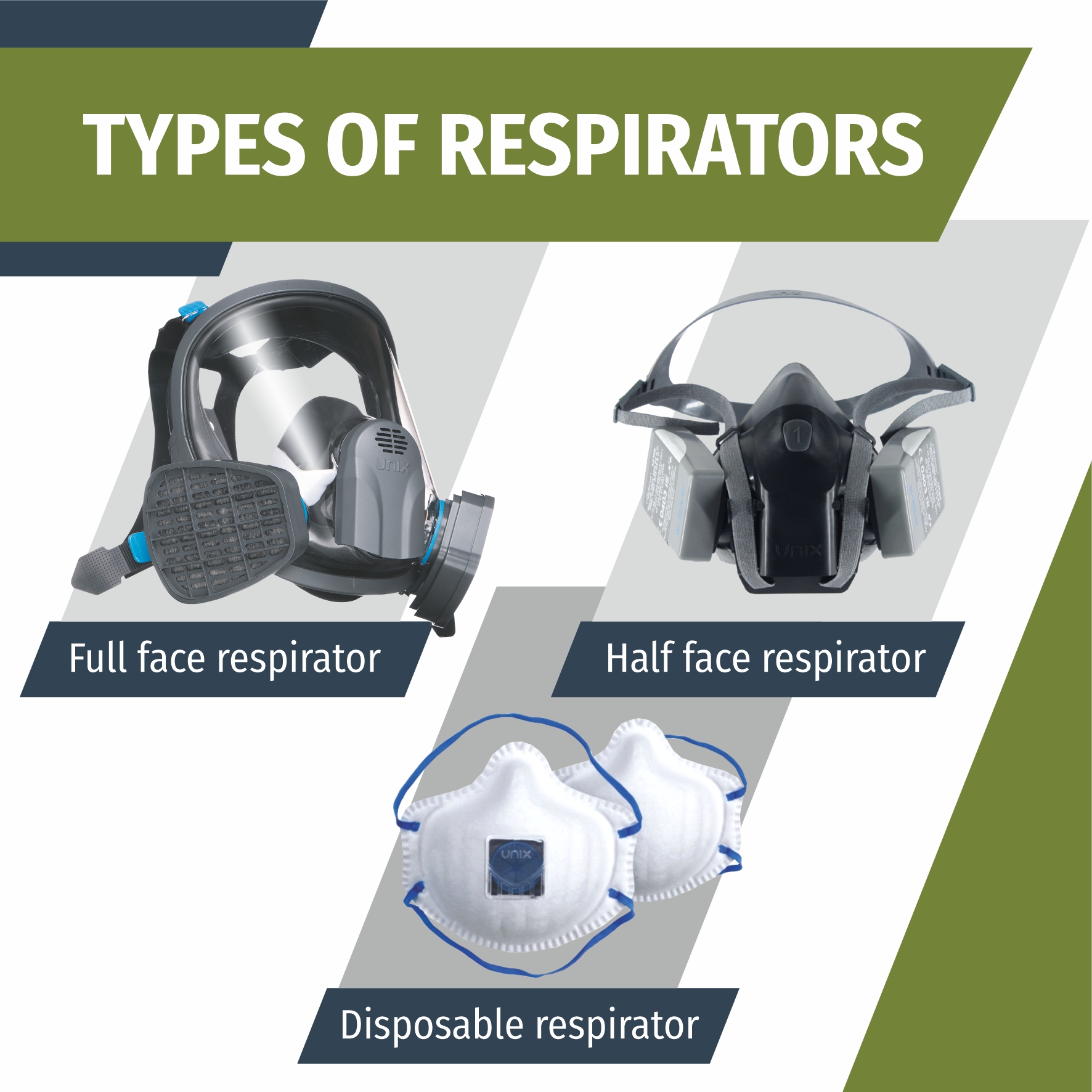
There are several types of respirators:
- Full face respirators, which cover the eyes, nose, and mouth
- Half face respirators, which cover the nose and mouth
- Filtering facepiece respirators, which are disposable respirators that cover the nose and mouth
Both full face and half face respirators have a flexible gasket at the edges creating a good seal. Respirators with rubberized seals often uses changeable filter cartridges. Filter cartridges provide flexibility, as they can be changed depending on the type of airborne hazard present. These cartridges are colour coded for identification and should be replaced after a predetermined amount of time or exposure.
Other commonly used types of respirators are filtering facepiece respirators, such as dust masks, N95 masks, and FFP1/2/3 respirators. These respirators can be quite difficult to fit. Commonly, the only contact between the respirator and the skin is usually the border of the respirator, which in some cases can be quite narrow, and most importantly, does not function like a gasket. This makes it easier for a leak to develop.
In a recent study from Cambridge University, seven people each tried on five different models of filtering facepiece respirators. Only three of the seven people were able to find a respirator which fit them correctly. Out of the 35 fit tests performed, only seven had an adequate fit (author - Eugenia O’Kelly, University of Cambridge).
Keep this in mind when choosing the best protection!

